 We are about halfway through a list of common MS Project misconceptions that I’ve identified through my experience of working as a Microsoft Project user, teacher, and consultant for the last 27 years. We’ve looked at Misconception #1, “Project is Not for Agile or An Agile Tool,” and Misconception #2, “P4W Can’t Be Customized.” In anticipation of my upcoming webinar on these misconceptions and more, today I’d like to cover the misconception that some folks have in thinking that Project Desktop is going away. In case you were wondering, it’s not!
We are about halfway through a list of common MS Project misconceptions that I’ve identified through my experience of working as a Microsoft Project user, teacher, and consultant for the last 27 years. We’ve looked at Misconception #1, “Project is Not for Agile or An Agile Tool,” and Misconception #2, “P4W Can’t Be Customized.” In anticipation of my upcoming webinar on these misconceptions and more, today I’d like to cover the misconception that some folks have in thinking that Project Desktop is going away. In case you were wondering, it’s not!
Microsoft, in November of 2019, launched Project for the web (P4W) to kick off their next chapter in re-designing the MS Project experience from the group up.
What you have to understand is that MS Project has been around since 1980’s in its DOS form. It moved into the windows (3.0) platform in the early 1990’s, which means that Project Desktop was a staple for project managers for close to 20 years before Project Server 2002 and 2003 were launched. Project Server introduced a little know application / collaboration portal called SharePoint. From then until today’s version of Project Online, we see another almost 20 years of strong investment and integration with an Enterprise approach. Microsoft has and continues to work towards pulling all projects and resources into a single platform.
So, with over 30 million licenses of Project Standard, Project Professional, and Project Online, it will be a long time before MS Project Desktop goes anywhere. In fact, there is not intent to end the largest single project scheduling tool used world-wide.
The fate of Project Desktop also holds sway over Project Online / Project Server. Many organizations want the full power, flexibility, and customizability that Project gives them, and, they don’t want it just for individuals, but in an enterprise capacity. This is where Azure (Cloud Server Based), or On-premise Project Server still meet a strong need for many customers.
If I may speak for them, I’d say that Microsoft recognizes they’ve have created a bit of confusion with their current messaging. I happen to know that they will be working to ease back a bit in their push towards newer platforms. Needless to say, while Microsoft has turned its marketing engine focus on the cloud and Project for the web, it still understands customer needs and plans to support its current legacy tools.
If you have more questions, don’t hesitate reach out to me. I know many have found it hard to get answers from the sales reps at Microsoft, but that is where myself and my senior staff can help provide clear information on vision, direction, and options you might be considering.
Leave your comments below, and check out my event on MS Project Misconceptions. Other articles in this series are listed below:
- The misconception of “Project is Not for Agile or An Agile Tool”
- The misconception of “P4W Can’t Be Customized”
- The misconception of “Managing Resources in Project is Too Hard”
- The misconception of “Project Doesn’t have Reporting”
Register now for the upcoming live event on MS Project Misconceptions


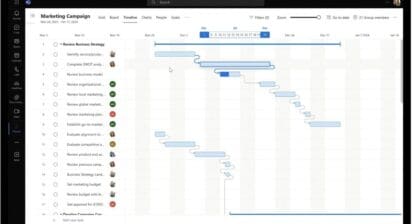
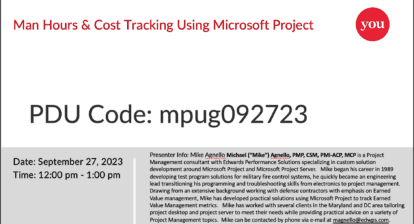
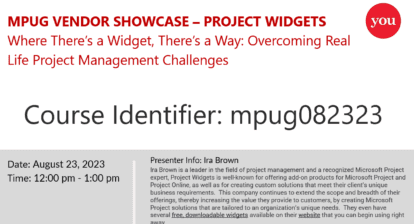

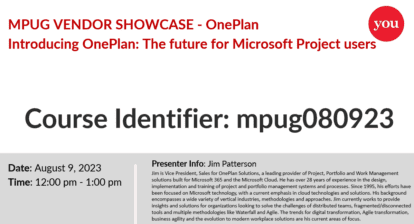
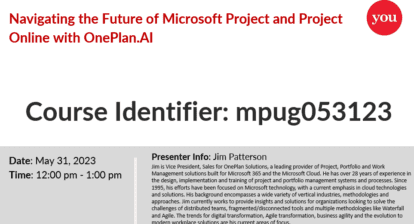
Marty Hadden
Thank You, Tim! I’ve been asking Microsoft AND their vendor partners for a roadmap for a couple of years now. While it’s still not super clear, the post above gives us more info than anyone else during this time. It is also clear to me that when the last 2-3 Ignites have almost zero Project content, that they do not have a plan. Please keep us in the loop in the future!
Tim Runcie
Thanks Marty, yes, it is a bit murky and Microsoft has done a bit of a disservice early on with pushing Project for the Web (P4W) and highlighting the sunset view of Project Online. While yes we know that will eventually come, there is are plenty ways to keep that going (endlessly if necessary) and also to migrate your schedules forward.
Reach out anytime and thank you for your comments and for being a MPUG member!
~Tim Runcie